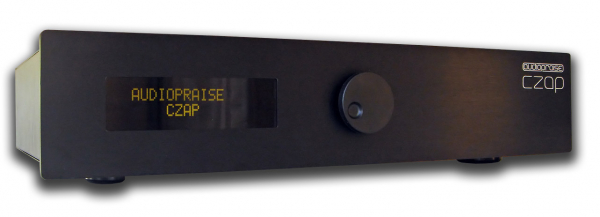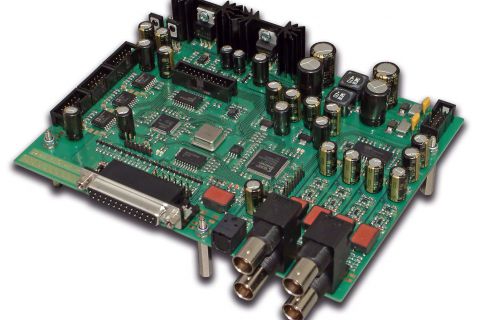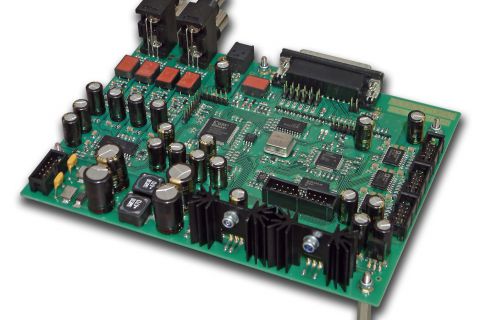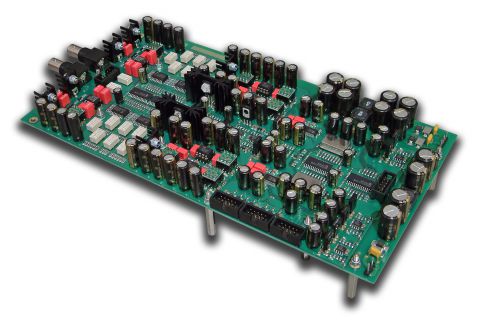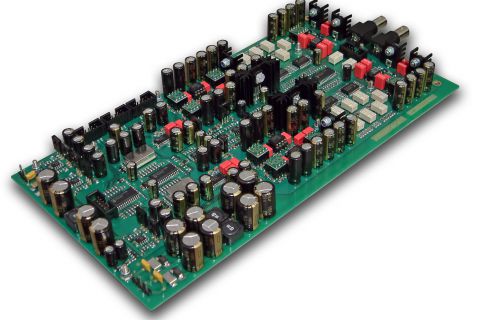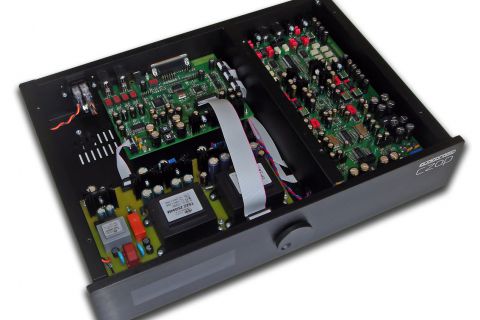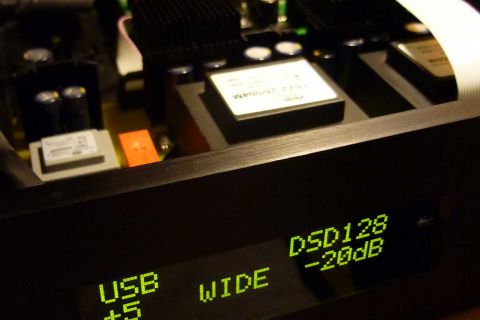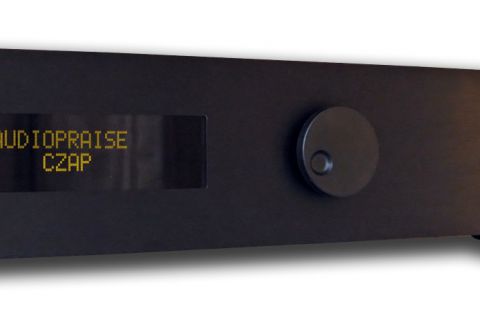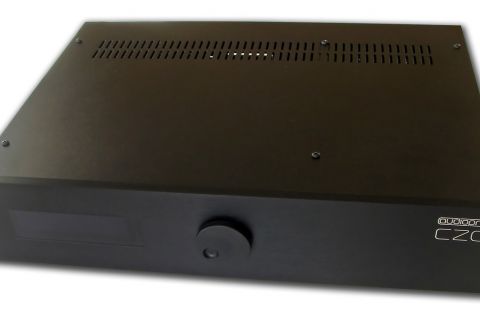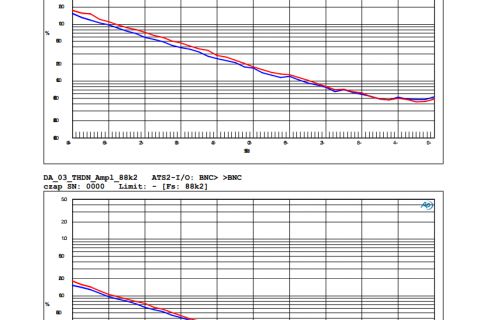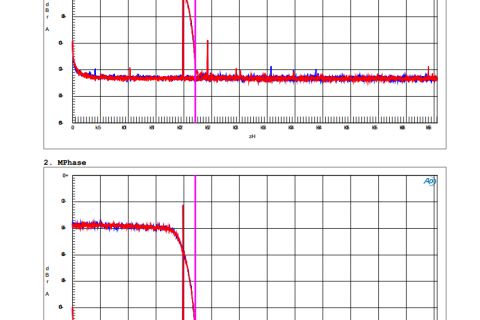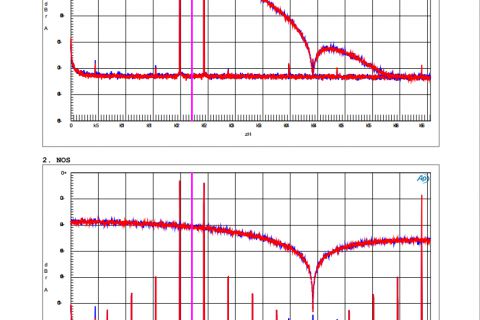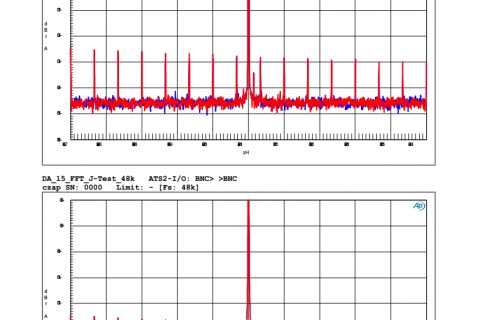CZAP
Reference class DAC platform with advanced signal processing and hybrid volume control.
There probably is not a single digital audio designer that wouldn’t attempt to design his own DAC :-). Well, here is ours! As we don’t necessarily want to become an audio equipment manufacturer, the original purpose of the CZAP was only to act as a demonstration platform with no intention to mass produce it. Interestingly enough, shortly after the first few listening tests and demos we actually had to do a small production run as the demo units kept selling themselves.
From the technical standpoint, the CZAP was created to push the limits of digital to analogue conversion, deal with all potential sources of noise and distortion and maintain the most transparent signal path in the digital as well as the analogue domain. The digital processing and the D-A system, usually occupying only a few square inches on a board, spans over two large four-layer boards - digital and analogue - and utilizes almost two thousand components.
Digital Board
The digital board is loaded with various digital audio inputs and synchronization outputs, an FPGA with vast computational power for signal processing, a powerful microcontroller and galvanic isolation towards the analogue board.
Features and specifications
Highlights:
The FPGA features a quite unusual up-sampling filter algorithm which doesn't use zero stuffing. This technique relaxes the filtering requirements and also allowed us to add a Non-Over-Sampling (NOS) option. There are 4 filter characteristics available. These include a traditional linear phase SHARP, our proprietary "no-ringing" FLAT, a carefully designed MINIMUM PHASE and the NOS that was already mentioned above. The precision of the up-sampling engine is 66bits. The oversampling engine also provides 3dB headroom for inter-sample peaking.
The DSD to PCM conversion engine also has 4 filter characteristics to choose from, which allows the user to have full control over the residual ultrasonic DSD noise. There is a selection of linear and minimum phase conversion filters, separate sets for DSD64 and DSD128. The modulation index 0.5 (DSD maximum level) is aligned with -3dBFS PCM, making both formats the same output level.
A little add-on to the digital board is an USB audio module that is connected via one of the internal I2S inputs. The audio bus on the module is galvanically isolated. With the native galvanic barrier between the digital and analogue section of the CZAP there are two isolation barriers between a computer and the analogue output, virtually eliminating any leakage of noise and interferences from the computer. The USB interface supports all PCM and DSD sampling rates.
Analogue board
The analogue board hosts the DAC chips, low jitter tunable oscillators, analog signal processing circuitry and our unique hybrid volume control system. All power regulators on the board are ultra low-noise discrete type and there are 16 of them in total.
Features and specifications
Highlights:
The two DAC chips are AD1955 used in dual mono configuration and external digital filter mode. The reason we picked this chip is that AD1955 offered the lowest noise-floor modulation among all off-the-shelf chips. The oscillators are located where they should be - as close to the DACs as possible. The audio bus feeding the DACs is re-clocked using a bunch of high speed flip-flops to improve the timing of all the digital signals on the bus.
Volume control is usually the Achilles heel of the hi-fi chain. As the wise guys say: The best preamp is no preamp. Full range volume control can only degrade the audio signal either by noise in high impedance potentiometers and buffers in the analogue domain or loss of bits and resolution in the digital domain. Sounds like having to choose the lesser of two evils. Well, not necessarily. We took the best from both worlds and left the bad behind. We have seamlessly combined precision digital control in the limited range of 12dB and 1dB step with an analogue constant-impedance relay-based attenuator with 6 steps of 12dB each.The result is a unique hybrid volume control system with over 80dB control range and no fear of audio quality loss.
CZAP
Finally, when both boards are combined with a low noise power supply and a control panel with user interface, the result is a high-performance (and good looking) DAC unit.
Main features of the demo unit:
Five independent power supplies for digital and analogue boards
Shielded chamber for the analogue board
Jog dial user control with OLED display
IR remote control
Machined and laser engraved aluminium front panel
Measurements:
The platform or any of its part is available primarily to audio electronics manufacturers. Both boards are highly configurable and detailed specifications can be provided upon request. Should you have any questions, don't hesitate to contact us. The demo units are available for audition primarily in the United Kingdom and Czech Republic.
